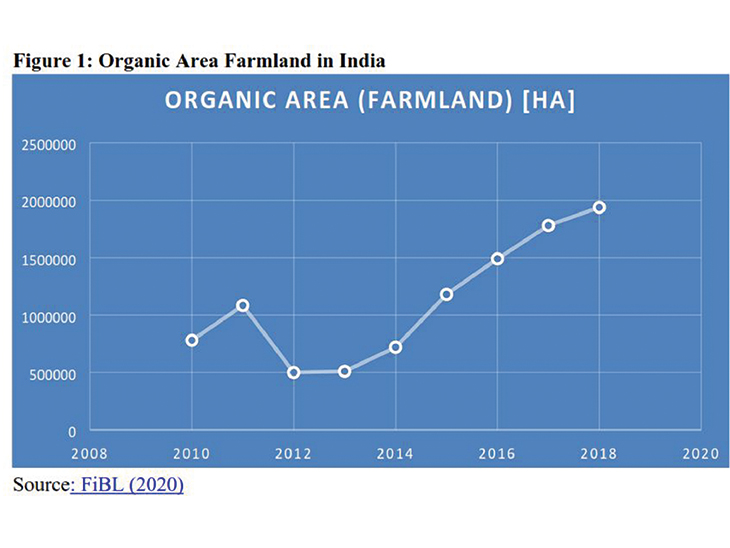India’s future as an organic powerhouse
India has great potential in the field of organic production. However, despite having 30% of the world’s certified organic producers, it accounts for just 3.3% (1.9 million hectares) of total organic cultivated area (57.8 million ha). The country’s organic food sector is expected to grow at 10% CAGR in the 2016-2021 period, and increase in value from US$386.32 million in 2015 to US$10.75 billion in 2025, according to APEDA data. The government has introduced various schemes to encourage organic farming in recent years, promoting exports from the north-eastern region and improved market linkages of producer clusters with agribusiness, phytochemical, organised retail and e-commerce operators.
Nevertheless, India’s organic agriculture faces multiple challenges, such as low yields, a reluctance of farmers to replace the use of chemical fertilisers and pesticides, and high logistics costs. These issues have led to higher prices for consumers, thereby reducing the potential market. There is also a serious problem with waste due to supply chain inefficiencies.
In 2018-19, India’s 1.9 million ha of organic area represented 1.1% of total agricultural land, an increase of 8.8% from 2017. The main certified organic production areas are Madhya Pradesh, Rajasthan, Maharashtra and Uttar Pradesh. Sikkim, in the north-east of India has declared itself the world’s first “organic state”, with every metre of its 76,000 hectares of farmland certified organic since 2015. The primary crops grown in the state are fruits (Sikkim mandarin, pear, guava and kiwi); spices (ginger, turmeric and cherry pepper), flowers (cymbidium orchids, anthurium and rose) and mushrooms.
During the current lockdown to combat the COVID-19 pandemic, India saw an unprecedented surge in retail sales of organic food products, due to the perceived benefits for immunity, overall food quality, and easy availability through online/e-commerce channels (Source: Pureecoindia).



